Four structures are given in options (a) to (d) . Examine them and select the aromatic structures.


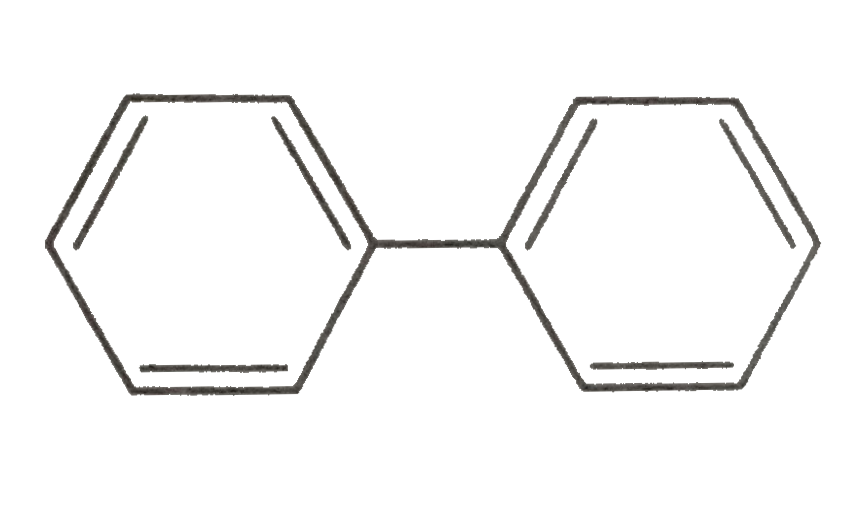
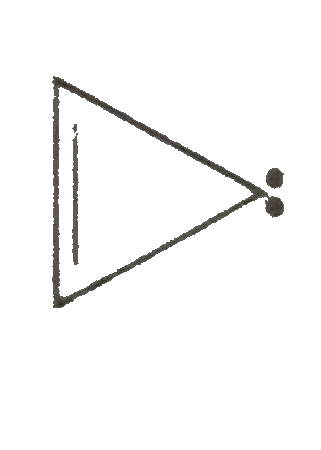
The correct Answer is:A, C
To determine which of the given structures are aromatic, we need to follow a systematic approach based on the criteria for aromaticity. Here’s a step-by-step solution:
Step 1: Understand the Criteria for Aromaticity
A compound is considered aromatic if it meets the following criteria:
1. It must be cyclic (ring structure).
2. It must be planar (all atoms in the ring must lie in the same plane).
3. It must have a continuous overlap of p-orbitals (conjugated π-bonds).
4. It must follow Huckel's rule, which states that there should be 4n+2 π electrons, where n is a non-negative integer (0, 1, 2, ...).
Step 2: Analyze Each Structure
Structure A:
- Cyclic: Yes, it is a ring.
- Planar: Yes, all carbon atoms are sp² hybridized, making them planar.
- Conjugated π-bonds: Yes, there are π-bonds that can delocalize.
- Count π electrons: There are 2 π electrons.
- Applying Huckel's rule: 4n+2=2 (where n=0).
- This satisfies Huckel's rule.
Conclusion: Structure A is aromatic.
Structure B:
- Cyclic: Yes, it is a ring.
- Planar: Yes, all carbon atoms are sp² hybridized.
- Conjugated π-bonds: Yes, there are π-bonds.
- Count π electrons: There are 8 π electrons.
- Applying Huckel's rule: 4n+2=8 (no integer n satisfies this).
Conclusion: Structure B is not aromatic.
Structure C:
- Cyclic: Yes, it is a ring.
- Planar: Yes, all carbon atoms are sp² hybridized.
- Conjugated π-bonds: Yes, there are π-bonds.
- Count π electrons: There are 12 π electrons.
- Applying Huckel's rule: 4n+2=12 (no integer n satisfies this).
However, if we consider the individual rings, one of the rings may still be aromatic.
- The first ring has 6 π electrons (satisfies Huckel's rule).
Conclusion: Structure C is aromatic because at least one of its rings is aromatic.
Structure D:
- Cyclic: Yes, it is a ring.
- Planar: Yes, all atoms are in the same plane.
- Conjugated π-bonds: Yes, there are π-bonds.
- Count π electrons: There are 4 π electrons.
- Applying Huckel's rule: 4n+2=4 (no integer n satisfies this).
Conclusion: Structure D is not aromatic.
Final Answer:
The aromatic structures are A and C.
---
A compound is considered aromatic if it meets the following criteria:
1. It must be cyclic (ring structure).
2. It must be planar (all atoms in the ring must lie in the same plane).
3. It must have a continuous overlap of p-orbitals (conjugated π-bonds).
4. It must follow Huckel's rule, which states that there should be 4n+2 π electrons, where n is a non-negative integer (0, 1, 2, ...).
- Cyclic: Yes, it is a ring.
- Planar: Yes, all carbon atoms are sp² hybridized, making them planar.
- Conjugated π-bonds: Yes, there are π-bonds that can delocalize.
- Count π electrons: There are 2 π electrons.
- Applying Huckel's rule: 4n+2=2 (where n=0).
- This satisfies Huckel's rule.
Conclusion: Structure A is aromatic.
- Cyclic: Yes, it is a ring.
- Planar: Yes, all carbon atoms are sp² hybridized.
- Conjugated π-bonds: Yes, there are π-bonds.
- Count π electrons: There are 8 π electrons.
- Applying Huckel's rule: 4n+2=8 (no integer n satisfies this).
Conclusion: Structure B is not aromatic.
- Cyclic: Yes, it is a ring.
- Planar: Yes, all carbon atoms are sp² hybridized.
- Conjugated π-bonds: Yes, there are π-bonds.
- Count π electrons: There are 12 π electrons.
- Applying Huckel's rule: 4n+2=12 (no integer n satisfies this).
However, if we consider the individual rings, one of the rings may still be aromatic.
- The first ring has 6 π electrons (satisfies Huckel's rule).
Conclusion: Structure C is aromatic because at least one of its rings is aromatic.
- Cyclic: Yes, it is a ring.
- Planar: Yes, all atoms are in the same plane.
- Conjugated π-bonds: Yes, there are π-bonds.
- Count π electrons: There are 4 π electrons.
- Applying Huckel's rule: 4n+2=4 (no integer n satisfies this).
Conclusion: Structure D is not aromatic.
The aromatic structures are A and C.
Topper's Solved these Questions
- BOOK - NCERT EXEMPLAR ENGLISHCHAPTER - HYDROCARBONSEXERCISE - Short Answer Type Questions20videos
HYDROCARBONS
- BOOK - NCERT EXEMPLAR ENGLISHCHAPTER - HYDROCARBONSEXERCISE - Matching The Columns4videos
HYDROCARBONS
- BOOK - NCERT EXEMPLAR ENGLISHCHAPTER - HYDROCARBONSEXERCISE - Long Answer Type Questions4videos
HYDROCARBONS
- BOOK - NCERT EXEMPLAR ENGLISHCHAPTER - ENVIRONMENTAL CHEMISTRYEXERCISE - Long Answer Type5videos
ENVIRONMENTAL CHEMISTRY
- BOOK - NCERT EXEMPLAR ENGLISHCHAPTER - HYDROGENEXERCISE - LONG ANSWER TYPE QUESTIONS8videos
HYDROGEN
Similar Questions
Knowledge Check
- Question 1 - Select One
Animals belonging to Phylum Chordata are fundamentally characterised by the presence of structures noted as A, B C and D. Identify them and select the correct option.
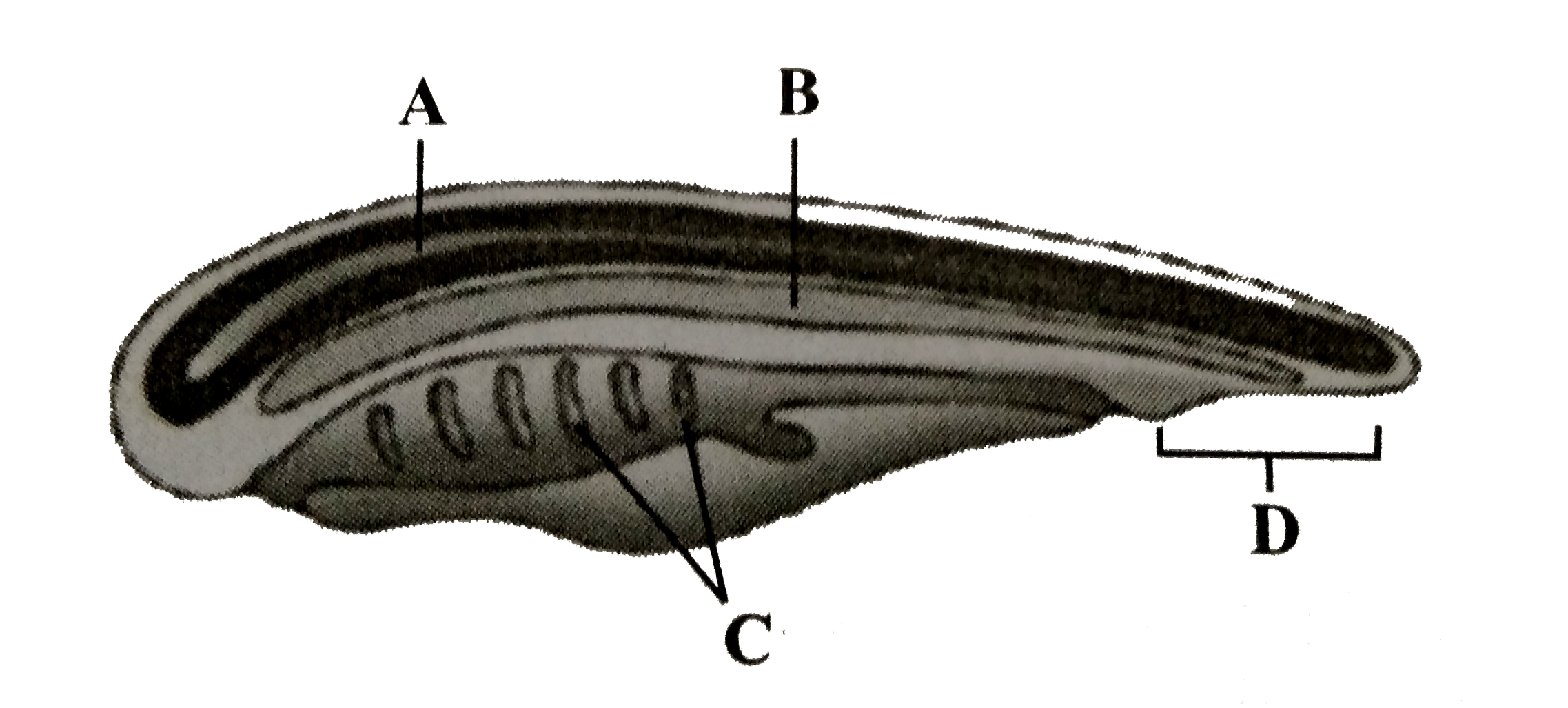 AA-Notochord, B-Nerve cord,
AA-Notochord, B-Nerve cord,
C-Gill slits, D-Post-anal partBA-Nerve cord, B-Notochord,
C-Gill slits, D-Post-anal partCA-Nerve cord, B-Notochord,
C-Post-anal part, D-Gill slitsDA-Nerve cord, B-Gill slits,
C-Notochord, D-Post-anal part - Question 2 - Select One
The given figure shows the structures of a mitochondrin with its four parts labelled A, B, C and D. Select the part correcltly matched with its function
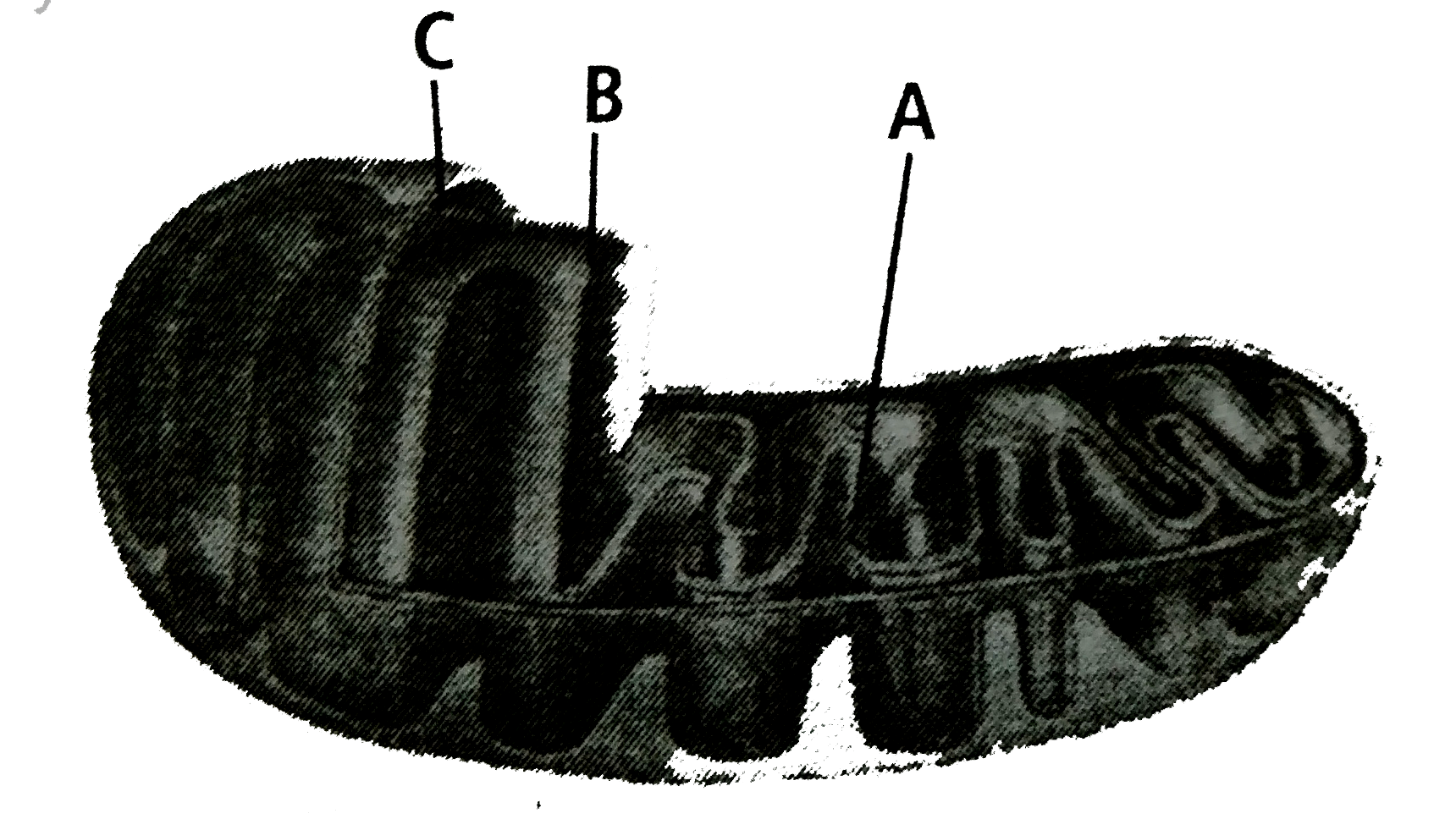 AC - Gives rise to inner membrane by splittingBB - Forms infoldings called cristaeCA - Possesses single circular DNA molecule and ribosomesDnone of these
AC - Gives rise to inner membrane by splittingBB - Forms infoldings called cristaeCA - Possesses single circular DNA molecule and ribosomesDnone of these
The three structural formulae A, B and C are given here. Identify them and select the correct option.
 View Solution
View SolutionFigure shows human urinary system with structures labeled A to D. Select option which correctly identifies them and gives their characteristics and/or functions.
 View Solution
View SolutionFigure shows human urinary system with structures labelled A to D. Select option which correctly identifies them and gives their characteristics and/or functions
 View Solution
View SolutionGiven below are four structure. Study the same and answer the questions given below:
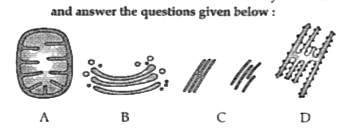
Name the structures labelled as A, B, C, and D.View SolutionRefer to the given figures showing structure of dicotyledonous seed and select the option that correctly identifies any of the labelled parts
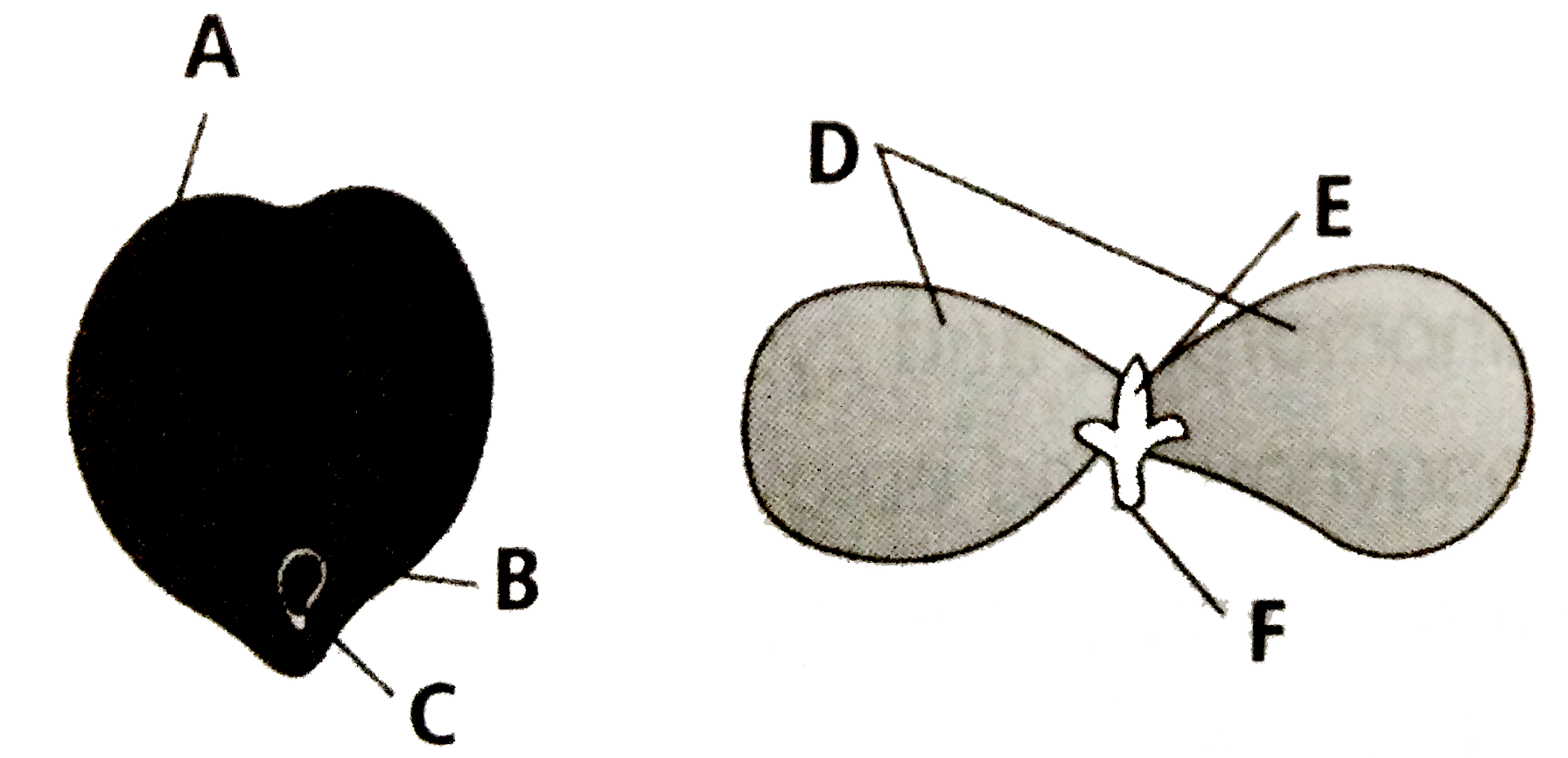 View Solution
View SolutionA structure of a neuron is given in the diagram below. Select the incorrect statement with reference to the same.
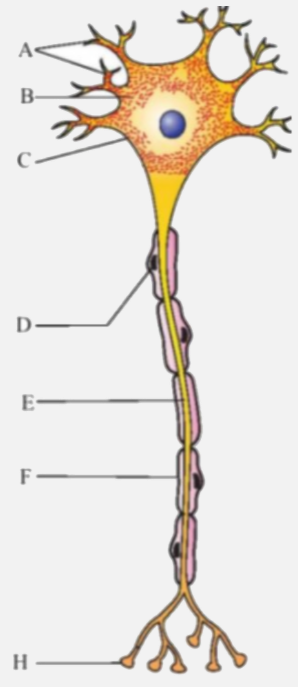 View Solution
View Solution


